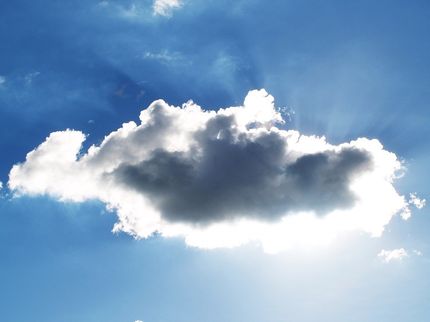Bleach in the Icelandic Volcanic Cloud
Chlorine in the ash plume of the Icelandic volcano Eyjafjallajökull attacked atmospheric trace gases
One year after the Eyjafjallajökull volcano in Iceland brought European air traffic to a standstill its ash plume revealed a surprising scientific finding: Researchers at the Max Planck Institute for Chemistry in Mainz found that the ash plume contained not only the common volcanic gas sulfur dioxide, but also free chlorine radicals. chlorine radicals are extremely reactive and even small amounts can have a profound impact on local atmospheric chemistry. The findings, which will be published in “Geophysical Research Letters“ give solid evidence of volcanic plume chlorine radical chemistry and allowed calculations of chlorine radical concentrations.
It has been known for some time that volcanic eruptions emit chlorine-containing gases, causing scientists to suspect that highly reactive chlorine radicals could also be present. However, sufficient experimental evidence proved elusive. That changed when researchers analyzed air collected in the ash cloud emitted by the Eyjafjallajökull volcano. During three special flights conducted by Lufthansa in spring 2010 using the CARIBIC atmospheric measurement container, researchers collected air samples which they brought back to their laboratory in Mainz for analysis. Among the compounds they looked for were hydrocarbons.
”Each volcano has its own character”, says Angela Baker, lead author of the paper. “We found that hydrocarbon concentrations were up to 70% lower inside the Eyjafjallajökull ash cloud than outside. Reaction with chlorine radicals was the only realistic explanation for the hydrocarbon losses. And further investigation confirmed that free chlorine radicals were the cause“. The scientists calculated concentrations of up to 66,000 chlorine atoms per cubic centimeter of air. While modest compared to concentrations of other gases, chlorine radicals are normally absent, and it does not take much of these very reactive atoms to have a noticeable impact on atmospheric chemistry.
Hydrocarbons like propane and butane can be found even in the cleanest and most remote parts of the lower atmosphere. Normally they are removed when they react with hydroxyl radicals, but they react many times faster with chlorine radicals. In doing so the chlorine reactions leave their specific ”signature“ on the mixture of hydrocarbons in the air. This signature can, in turn, be used to calculate how many chlorine radicals were present. The Max Planck scientists who calculated volcanic ash cloud chlorine radical concentrations for the first time anticipate that similar results will be found in plumes from other volcanoes, such as the currently erupting Grimsvötn. They also hope that their method will be used during future studies to identify and understand volcanic chlorine radical chemistry.
Original publication
Angela K. Baker et al.; Investigation of chlorine radical chemistry in the Eyjafjallajökull volcanic plume using observed depletions in non-methane hydrocarbons; Geophysical Research Letters, in press, 2011
Original publication
Angela K. Baker et al.; Investigation of chlorine radical chemistry in the Eyjafjallajökull volcanic plume using observed depletions in non-methane hydrocarbons; Geophysical Research Letters, in press, 2011
Topics
Organizations
Other news from the department science

Get the chemical industry in your inbox
By submitting this form you agree that LUMITOS AG will send you the newsletter(s) selected above by email. Your data will not be passed on to third parties. Your data will be stored and processed in accordance with our data protection regulations. LUMITOS may contact you by email for the purpose of advertising or market and opinion surveys. You can revoke your consent at any time without giving reasons to LUMITOS AG, Ernst-Augustin-Str. 2, 12489 Berlin, Germany or by e-mail at revoke@lumitos.com with effect for the future. In addition, each email contains a link to unsubscribe from the corresponding newsletter.




























































